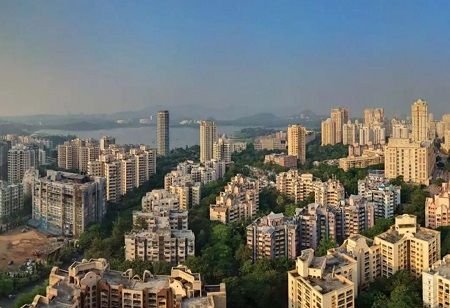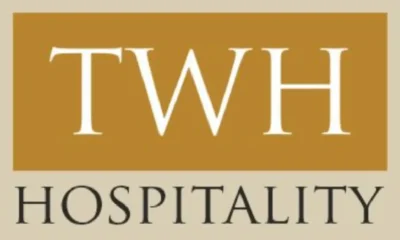News
Lucknow Rising: Infrastructure Boom Positions UP Capital Among Most Livable Tier II Hubs

Lucknow, November 19, 2025: Primarily known for its regal charm, Lucknow is now scripting a new chapter that blends grace with growth. Without losing its cultural soul, Lucknow has embraced the language of progress through wide expressways, a growing metro network, and thoughtfully planned urban zones. This balance between preservation and progress is what makes Lucknow’s rise remarkable: a city rooted in tradition, yet confidently stepping into the modern era with infrastructure and planning as its new hallmarks.
According to a report by CII-Colliers, India’s real estate industry is on the brink of a generational transformation, set to grow nearly 20-fold from $0.3 trillion today to between $5 trillion and $10 trillion by 2047. The sector’s contribution to GDP is projected to rise to as much as 20 per cent as it becomes a key pillar in India’s Viksit Bharat vision under the Amrit Kaal roadmap. The report predicts that India’s urbanization rate will rise sharply, with nearly 40 per cent of the population living in cities within a few years. This shift will drive demand for world-class housing, logistics hubs, and sustainable urban ecosystems, especially in Tier II and III cities.
Fueling this transformation is a wave of infrastructure development that has redefined connectivity across Uttar Pradesh. The Purvanchal Expressway has seamlessly linked Lucknow to the eastern belt and Varanasi region, while the upcoming Lucknow–Kanpur Expressway is emerging as a major industrial and commercial lifeline. Within the city, the Metro’s expanding network, the Outer Ring Road, and the widened Shaheed Path are making mobility faster and smoother than ever before. These projects are unlocking new economic corridors, improving logistics efficiency, and attracting investors who now view Lucknow as a gateway to North India’s next growth frontier.
As infrastructure unlocks new zones of accessibility, Lucknow’s real estate landscape is expanding in exciting directions. Corridors like Shaheed Path, Sultanpur Road, Amar Shaheed Path, and Faizabad Road are emerging as the city’s new growth frontiers. Developers are responding with integrated townships, lifestyle-led residential enclaves, and mixed-use hubs designed for convenience, community, and comfort. The demand is being fueled by a new demographic of professionals, NRIs, and upwardly mobile families seeking the sophistication of metro living without losing the warmth of a Tier II city.

Mohit Goel, Managing Director, Omaxe Group, says, “Lucknow has moved far beyond its image as just a cultural capital — it’s now one of the most exciting real estate stories in North India. What’s driving this shift is the city’s smart, consistent investment in infrastructure. The new expressways, including Purvanchal, Lucknow–Agra, and the upcoming Ganga and Kanpur–Lucknow, are transforming accessibility, while the metro expansion is reshaping how people move within the city. You can feel the momentum on the ground, especially in areas like the Outer Ring Road and Raebareli Road. Investors aren’t looking at Lucknow for quick gains anymore; they see long-term value built on planned growth, livability, and rising economic activity.”
While the growth story continues in the metros, JLL reported a significant rise in real estate transactions in Bhubaneswar, Guwahati, Chandigarh, Jaipur, Lucknow, Indore, Nagpur, Coimbatore, and Kochi. Lucknow, as Uttar Pradesh’s capital, leverages infrastructure to attract industrial investments, including defence manufacturing. The city anticipates strong commercial inventory over the next 3-4 years.

Yash Miglani, Managing Director, Migsun Group, says, “What’s unique about Lucknow’s rise is the scale of opportunity it’s creating across sectors: from housing to commercial. Improved arterial roads and expressways are reshaping investment patterns, drawing first-time buyers, businesses, and institutional investors. For developers, this means a chance to step up their game and redefine what mid-income and aspirational living looks like in a Tier-2 context. The city’s clean governance, connectivity, and infrastructure pipeline have made it one of the most promising real estate destinations in northern India.”

Preksha Singh, CEO, Agrasheel Infratech Pvt Ltd. says, “Lucknow’s development is no longer confined to its core city — the peripheries are turning into vibrant, liveable neighborhoods. Corridors like Sultanpur Road and Shaheed Path are witnessing the next wave of organized urban expansion. Buyers today seek quality of life — better roads, parks, schools, and access to daily conveniences. As developers, our responsibility is to create homes that align with this new urban mindset, where comfort, safety, and sustainability go hand in hand with affordability.”
Therefore, Lucknow today stands as a benchmark for how a Tier II city can evolve without losing its essence. Its growth is not just about roads, expressways, or metro lines; it’s about shaping a city that balances heritage with progress, and community with convenience. As planned urbanisation and inclusive development continue to unfold, the city is setting new standards for livability and opportunity.

 News4 weeks ago
News4 weeks agoInfrastructure Automation Company Enlite Launches World’s First Patented Edge Controller for Intelligent Infrastructure

 News2 weeks ago
News2 weeks agoTWH Hospitality Announces Aggressive F&B Expansion Plan with ₹30 Cr Investment

 News2 weeks ago
News2 weeks agoCanonicus Capital Closes ₹200 Crore Private Equity Fund Focused on NCR Real Estate

 News2 weeks ago
News2 weeks agoThe Big-Size, Branded Luxury Ticket: Is a New Chapter Unfolding in Indian Real Estate?

 News4 weeks ago
News4 weeks agoGodrej Properties Crosses FY26 Annual Business Development Guidance with Acquisition of 75-acre land parcel in Nagpur

 Guest Column2 weeks ago
Guest Column2 weeks agoGhats With a View: Tilari Can Redefine Farmstay Market in India

 News4 weeks ago
News4 weeks agoReal Estate Investment Momentum in APAC, India to Hold Steady Through 2026: Colliers’ Survey Insights

 News2 weeks ago
News2 weeks agoLoans to Get Cheaper as RBI Cuts Repo Rate to 5.25% Amid Low Inflation, Robust GDP Growth





























